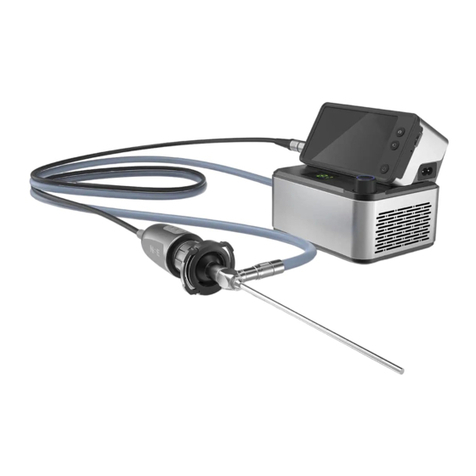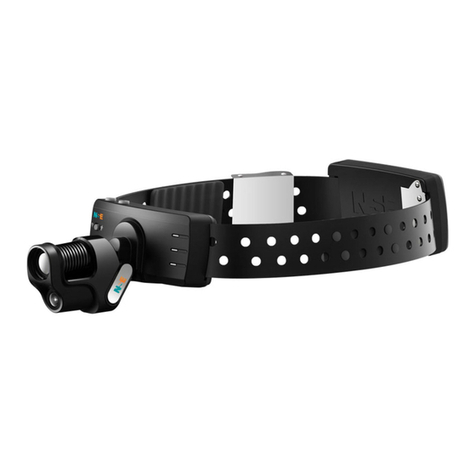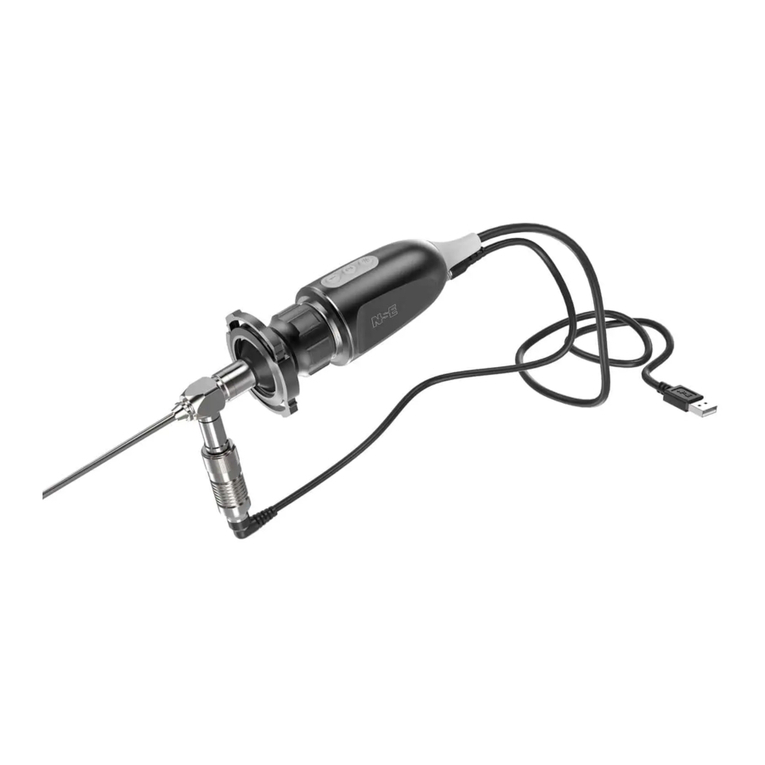
3.4 Main Parameters
a) Size: 105mm*101mm*24mm.
b) Optical interface: compatible for various C-Mount interfaces, variable and
fixed focus endoscopic optical interfaces.
c) Sensor DPI: 2 million pixels.
d) Screen: 3.5inch LCD.
e) Image Format: JPEG, 2048*1536pixel.
f ) Video Format: MOV, 1920*1080pixel or 1280*720pixel, 30FPS.
g) Storage: Micro SD card, max.32GB, minimum sequential write speed at
10M/S, maximum sequential read speed at 30M/S.
h) Foldable screen angle: 0°~120°.
i ) Battery duration: at least 3hrs.
j ) Power Interface: DC 5V Recharge.
k) Internal Power: rechargeable Li-ion Battery, 3.7V, 1900mAh.
4 Maintenance
4.1 Maintenance
Please recharge the device for more than 6hrs for the first time using or
long time without using it.
Please don’t touch the lens with fingers, and don’t scratch the lens with
rigid object.
The battery can stand for 500 recharging cycles or more under normal
random recharging, which varies depending on different using situation.
Please clean the device and keep it in the original packing materials when
long time without using it.
4.2 Cleaning
Alert: Power must be turned off and AC supply must be cut down before
cleaning the device.
5






























